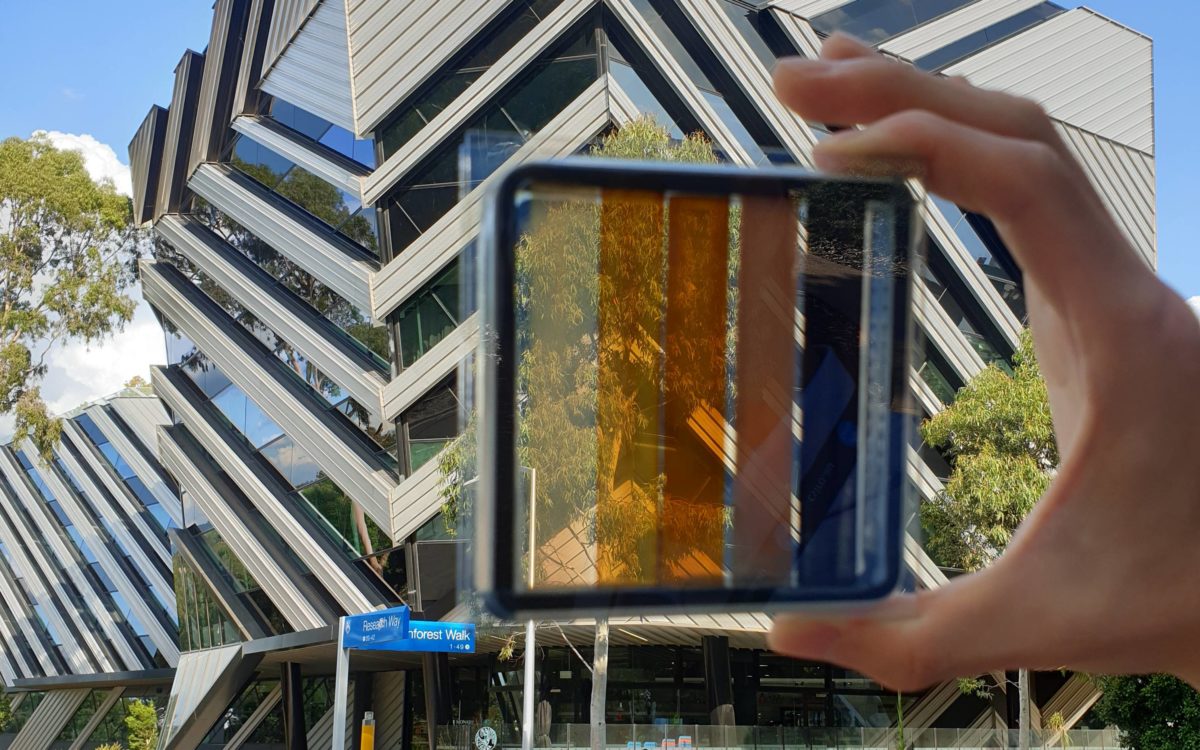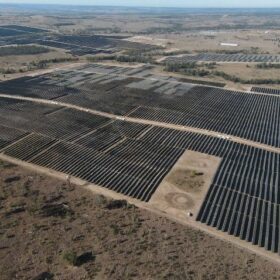Australian scientists have succeeded in producing next-gen perovskite solar cells with a conversion efficiency of 17% that can transform windows into active power generators. The semi-transparent solar cells are able to generate electricity while allowing light to pass through.
The researchers – led by Professor Jacek Jasieniak from the ARC Centre of Excellence in Exciton Science (Exciton Science) and Monash University – say in a paper in Nano Energy that they used an organic semiconductor that can be made into a polymer and used it to replace a commonly used solar cell component, known as Spiro-OMeTAD, which shows very low stability because it develops an unhelpful watery coating. The substitute produced astonishing results.
“Rooftop solar has a conversion efficiency of between 15 and 20 per cent,” Jacek said. “The semi-transparent cells have a conversion efficiency of 17 per cent, while still transmitting more than 10 per cent of the incoming light, so they are right in the zone. It’s long been a dream to have windows that generate electricity, and now that looks possible.”
The idea of semi-transparent solar cells is not new, but previous designs have been largely hindered by cost, instability or inefficiency. For instance, the transparent solar technology of ASX-listed company ClearVue has a conversion efficiency of 3.3%.
“There is a trade-off,” explained Professor Jasieniak, “The solar cells can be made more, or less, transparent. The more transparent they are, the less electricity they generate, so that becomes something for architects to consider.”
He added that solar windows tinted to the same degree as current glazed commercial windows would generate about 140 watts of electricity per square meter. This roughly means that two square meters of solar window will do the same job as a standard rooftop solar panel.
Commercialization
Despite limitations, solar windows are touted as a gamechanger that could transform architecture, urban planning, and electricity generation. But to reach its full potential, the fledgling building-integrated PV (BIPV) technology would need a joint push from the architectural community, construction industry, and PV manufacturers.
Backed by the Australian Renewable EnergyAgency (ARENA), Professor Jasieniak and colleagues from Monash’s Materials Science and Engineering Department and Australia’s national science agency, CSIRO, are now investigating how the technology could be built into commercial products with Viridian Glass, Australia’s largest glass manufacturer.
Co-author and CSIRO research scientist, Dr Anthony Chesman, said the team is working on scaling up the manufacturing process. “We’ll be looking to develop a large-scale glass manufacturing process that can be easily transferred to industry so manufacturers can readily uptake the technology,” he said.
The scientists say the first application is likely to be in multistorey buildings. While large windows deployed in high-rise buildings are expensive to make, the additional cost of incorporating the semi-transparent solar cells into them will be marginal.
“But even with the extra spend, the building then gets its electricity free!” Professor Jasieniak said. “These solar cells mean a big change to the way we think about buildings and the way they function. Planners and designers might have to even reconsider how they position buildings on sites, to optimise how the walls catch the sun.”
As to when the first commercial semi-transparent solar cells will be on the market, “that will depend on how successful scaling of the technology will be, but we are aiming to get there within 10 years,” said Professor Jasieniak.
This content is protected by copyright and may not be reused. If you want to cooperate with us and would like to reuse some of our content, please contact: editors@pv-magazine.com.








2 comments
By submitting this form you agree to pv magazine using your data for the purposes of publishing your comment.
Your personal data will only be disclosed or otherwise transmitted to third parties for the purposes of spam filtering or if this is necessary for technical maintenance of the website. Any other transfer to third parties will not take place unless this is justified on the basis of applicable data protection regulations or if pv magazine is legally obliged to do so.
You may revoke this consent at any time with effect for the future, in which case your personal data will be deleted immediately. Otherwise, your data will be deleted if pv magazine has processed your request or the purpose of data storage is fulfilled.
Further information on data privacy can be found in our Data Protection Policy.